Playing Cards in El Salvador
Cards were first imported to Central America from Spain, although local production has always existed. Today El Salvador has some local production of playing cards, which are often of rudimentary quality.
El Salvador was named in 1524 by it's Spanish conqueror, Pedro de Alvardo, after the Holy Saviour. It's people are chiefly of mixed Spanish and Indian blood and speak Spanish. With the neighbouring Spanish-American colonies El Salvador freed itself from Spanish rule in 1821, and with the states of Guatemala, Costa Rica, Honduras and Nicaragua formed the Central American Federation. The Federation was dissolved in 1839 when El Salvador became an independent republic.

Above: Spanish playing cards exported to new Spanish colonies from c.1520 onwards. Cards like these would have been in use in El Salvador for the first 300 years or so after the first Spanish settlers arrived.
"El problema es que no se hacen muchas barajas aqui. Practicamente las unicas que se encuentran son las importadas porque son las que prefieren la gente de aqui. Son de mejor calidad, plastificadas etc. Como las de aqui son muy inferiores en este aspecto pues la gente no las compran y son escasas y solo se encuentra en alguna que otra tiendecita por ahi en el centro"
Cards were first imported to Central America from Spain, although local production has always existed. Today El Salvador has some local production of playing cards, which are often of rudimentary quality. Copies of Fournier's 'Castilian' design, as well as redrawings of the 19th century Cádiz pattern, can be found. Brands include Naipes HISPASA, Naipes El BORREGO and Naipes CISNE.
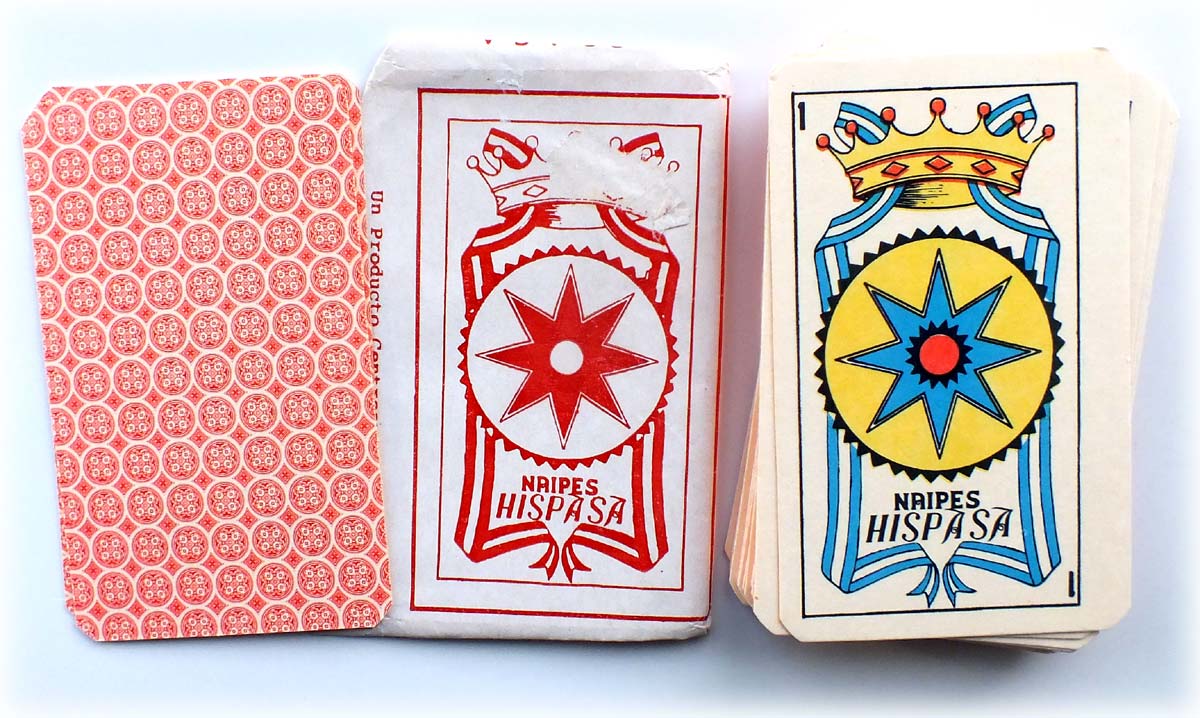
Above: Naipes Hispasa manufactured in El Salvador by Cartotecnica Centroamericana, S.A. see more →
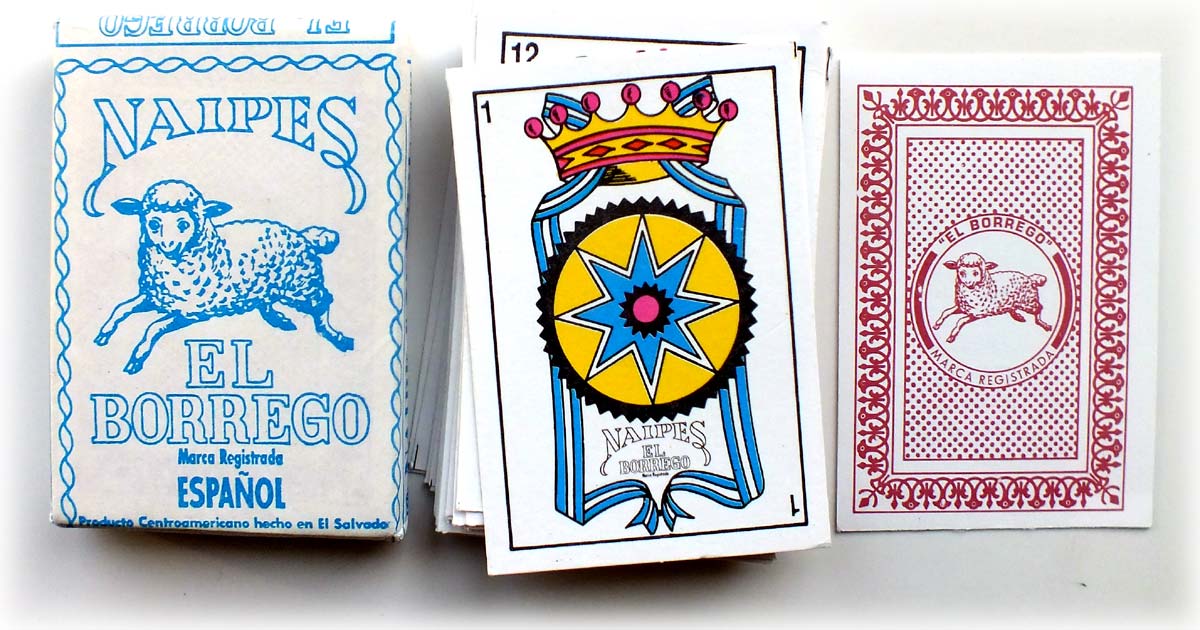
Above: Naipes El Borrego manufactured in El Salvador see more →
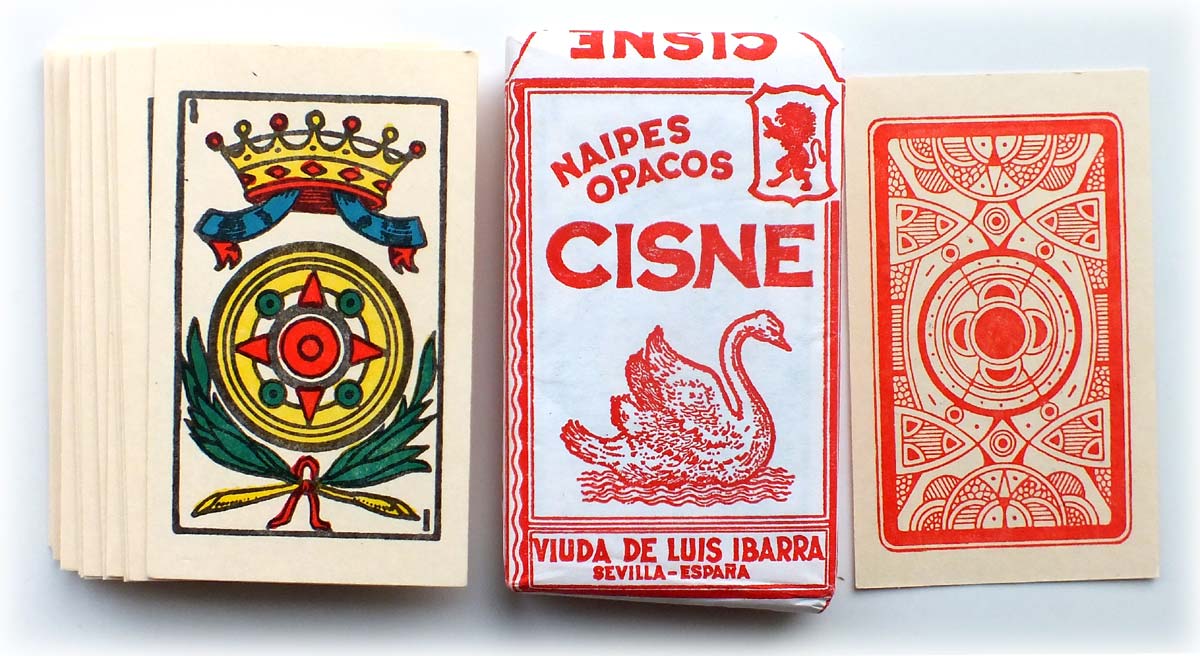
Above: Naipes Cisne manufactured in El Salvador by a local printer imitating Spanish cards see more →
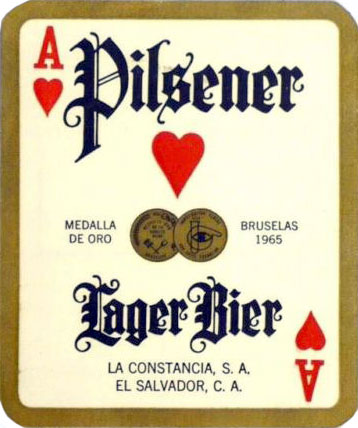

By Simon Wintle
Member since February 01, 1996
Founder and editor of the World of Playing Cards since 1996. He is a former committee member of the IPCS and was graphics editor of The Playing-Card journal for many years. He has lived at various times in Chile, England and Wales and is currently living in Extremadura, Spain. Simon's first limited edition pack of playing cards was a replica of a seventeenth century traditional English pack, which he produced from woodblocks and stencils.
Trending Articles
Popular articles from the past 28 days
Related Articles
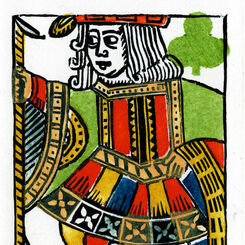
Woodblock and Stencil Jack of Clubs
A limited edition art print of the Jack of Clubs 1984 woodblock joker.
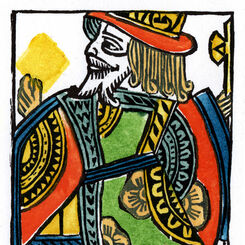
Woodblock and Stencil King of Diamonds
A limited edition art print of the King of Diamonds 1984 woodblock joker.
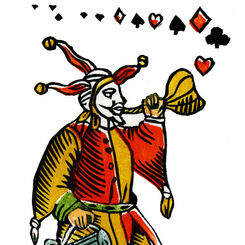
Woodblock and Stencil Joker
A limited edition art print of the 1984 woodblock joker.
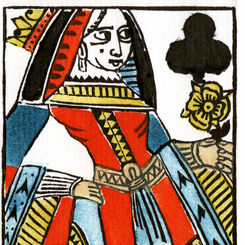
Woodblock and Stencil Queen of Clubs
A limited edition art print of the Queen of Clubs 1984 woodblock joker.
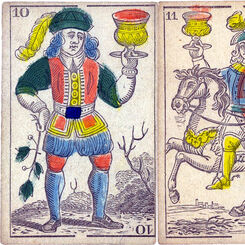
Spanish-suited deck by J.Y. Humphreys
A rare Spanish-suited deck published by J.Y. Humphreys, Philadelphia, c.1816.
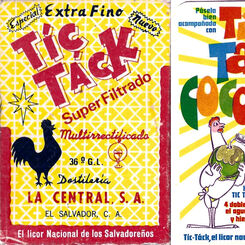
Tík Táck vodka
A brightly coloured pack promoting “Tík Táck” cane vodka from Destileria La Central S.A. in El Salva...
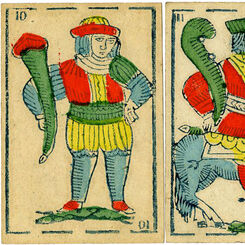
P. Buscaglia: Spanish-suited cards
Spanish-suited cards published by P. Buscaglia, Mele & Genova.
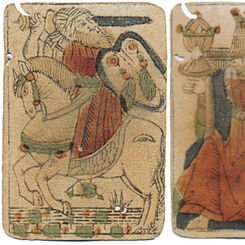
XV Century Spanish-suited playing cards
XV Century Spanish-suited playing cards with moorish influences
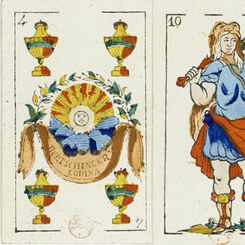
Bertschinger y Codina
Fantasy Spanish-suited playing cards by Bertschinger y Codina (Barcelona), c.1850.
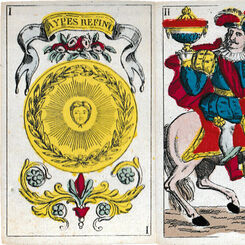
Alphonse Arnoult Spanish-suited pack
Luxurious Spanish-suited pack made by Alphonse Arnoult, Paris, France, c.1850.
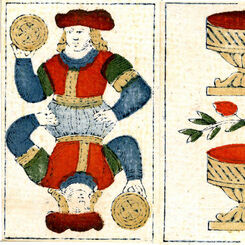
Clemente Roxas double-ended Spanish pack
Double-ended Spanish-suited playing cards published by Clemente de Roxas in Madrid, 1814.
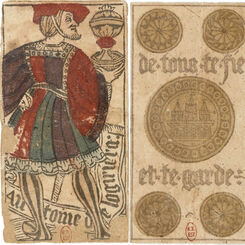
Antoine de Logiriera
Archaic Spanish-suited playing cards published in Toulouse by Antoine de Logiriera (1495-1518).
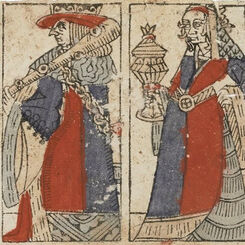
J. Deluy c.1490s
Archaic Spanish-suited cards produced by J. Deluy c.1490s.
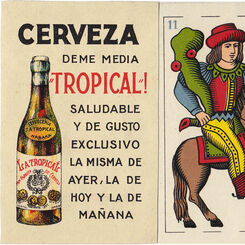
Wüst Spanish pattern
Wüst Spanish pattern c.1910 advertising Cuban ‘Tropical’ beer.
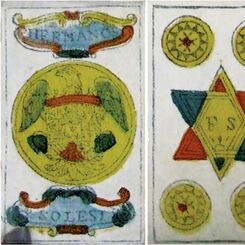
Hermanos Solesio
“Money Bag” pattern by Hermanos Solesi, late 18th c.
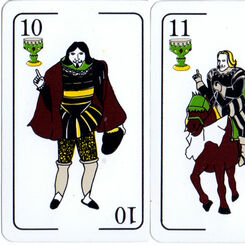
Kem ‘Spanish’ playing cards
Kem ‘Spanish’ playing cards appear to depict Spanish conquistadors © 1994.
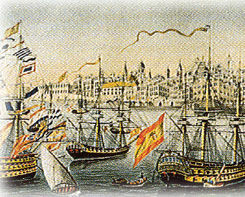
Cádiz Pattern playing cards
Cádiz Pattern playing cards
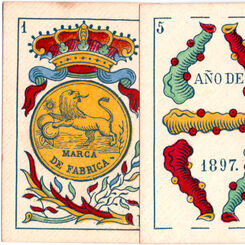
Naipes ‘El Leon’ 1897
Naipes ‘El Leon’ manufactured by Federico Hidalgo (Barcelona, 1897-1899).
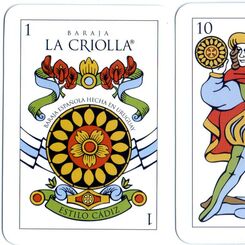
Naipes ‘La Criolla’ by Anabella Corsi
Inspired by an archaic Spanish pattern formerly used in Spain during the 16th and 17th centuries.
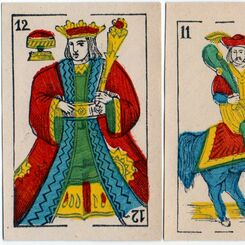
Anon Spanish Cards c.1875
Spanish-suited playing cards made in Belgium by Mesmaekers Frères, c.1875.
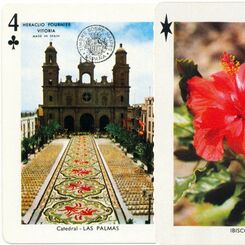
Canary Islands Souvenir
Canary Islands Souvenir by Heraclio Fournier, c.1970.
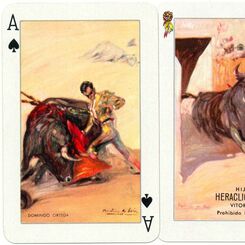
Martínez de León
Bull-fighters pack published by Hijos de Heraclio Fournier, Vitoria (Spain) with artwork by Andrés M...
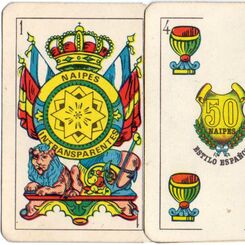
Naipes Españoles “El Mexicano”
Standard Catalan-type deck, titled "El Mexicano", by an anonymous Argentinean manufacturer, c.1980s....
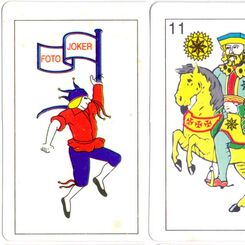
Foto Joker
'Foto Joker' Spanish playing cards for Matera Color Laboratory, 2008.
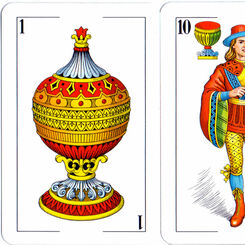
El Jokey by Piatnik, 1990s
‘El Jokey’ Spanish-suited pack by Piatnik & Sons, Vienna, 1990s

Philishave
Spanish-suited advertising deck for Philishave electric razors.
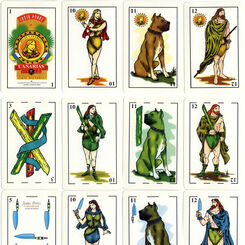
Baraja Canaria
‘La Auténtica Baraja Canaria’ was published in 1995 by Justo Pérez as an expression of the history a...
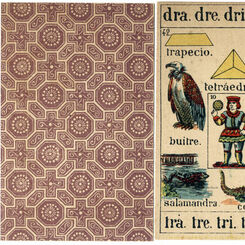
Jaime Margarit - Recreo Infantil
'Recreo Infantil' children's educational cards published by Jaime Margarit, Palamós (Gerona) c.1888....
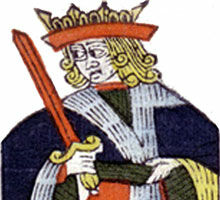
Benoist Laius
Spanish playing cards such as these were used in those parts of France where certain games were enjo...
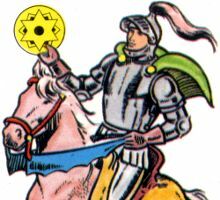
Baraja Edad Media
Baraja Edad Media, fantasy Spanish-suited medieval playing cards published Mas-Reynals, Barcelona, 1...
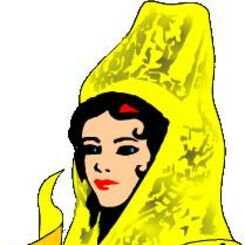
La Española Classic
‘La Española Classic’ is a traditional ‘La Española’ Spanish-suited pack and is produced in several ...
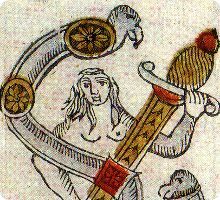
Joan Barbot
Joan Barbot, San Sebastian c.1765-1810.
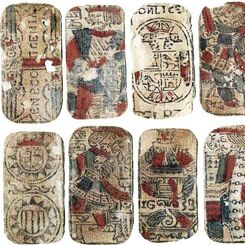
Taxation on Spanish Playing Cards
Taxation on Spanish Playing Cards.
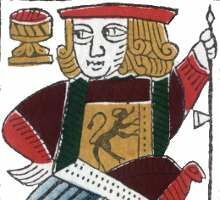
Navarra, XVII Century
Facsimile of 17th century Spanish-suited playing cards produced by Erregeak, Sormen S.A., Vitoria-Ga...
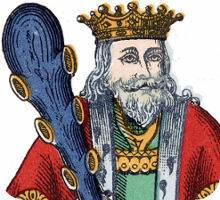
Cartes Catalanes
Cartes Catalanes are used in a small area in the Eastern Pyrenees region of Southern France.

Copag Baralho Espanhol
Copag Baralho Espanhol / Naipes Español.
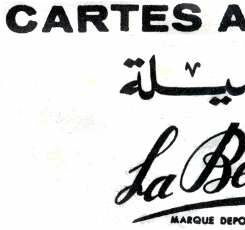
Chaudsoleil Wine
Chaudsoleil Red Wine advertising playing cards from Morocco.
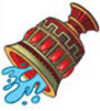
Dengue
Dengue prevention playing cards. Juego de 40 Naipes. Material para la prevención del Dengue, Ministe...
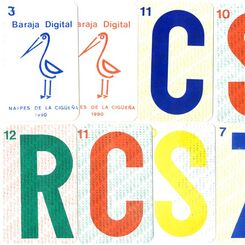
Baraja Digital
Baraja Digital by Naipes De La Cigüeña, 1990.
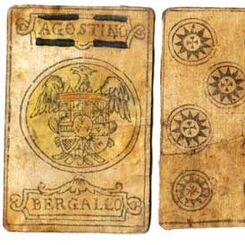
Agostino Bergallo
Agostino Bergallo Spanish pattern made for South American countries
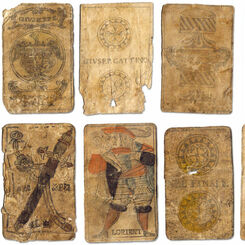
Giuseppe Cattino
Playing cards manufactured in Italy by Giuseppe Cattino and Paolo Montanar for Spanish markets.
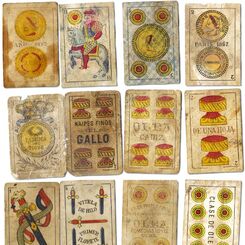
Naipes del Salitre
Playing cards recovered from the Northern Chile saltpetre workers. The cards are mostly from Spanish...
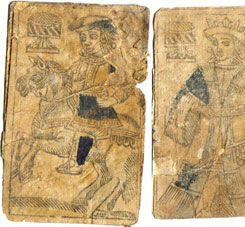
Pedro Bosio, 2
Cards of the Spanish National Pattern manufactured by Pedro Bosio, Genova (Italy) during the 18th ce...
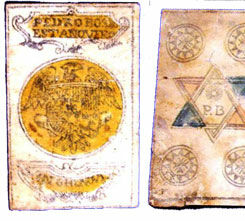
Pedro Bosio
Cards of the Spanish National Pattern 'Money Bag' type manufactured by Pedro Bosio, Genova (Italy) ...


